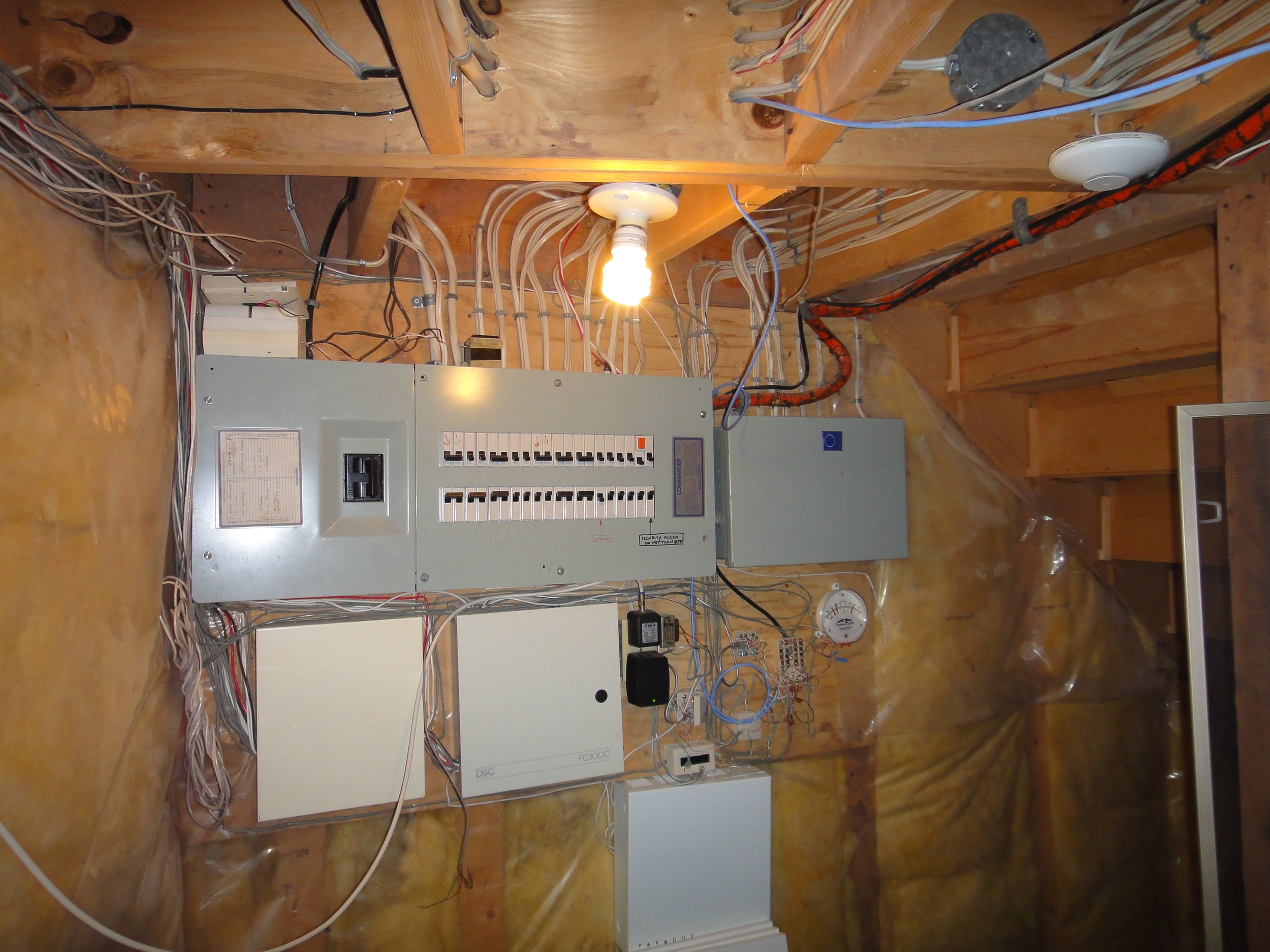Just like any product or service, there is a wide variety of home inspectors out there. Take care to make the right choice. A home inspection is a one-time opportunity to have a house reviewed meticulously by an inspector and you need to be satisfied that they are up to the task. Even with industry regulation, it’s important to choose wisely. Even moreso without any regulation at all.
Want some free information?
Ontario Home Inspections - Insurance and Other Considerations
The home inspection industry in Ontario is completely unregulated. You can declare yourself a home inspector right now, and you are just as legally entitled as me to offer your services as Ontario’s newest home inspector.
But because there is no standard license or certification in our jurisdiction, you need to do your homework when hiring a home inspector.
Walkthroughs vs. Full Home Inspections
For most people, a home is the most expensive purchase they will ever make. Many people recognize that a home inspection can be invaluable to help ensure they aren’t going to get any nasty expensive surprises when they move into their home.
However, I often get requests for a shorter, cheaper inspection service generally referred to as a ‘walkthrough inspection.’ As it is not a home inspection by definition, I’ll refer to it as a ‘walkthrough’ from now on. What’s the difference?
Pre-Listing Inspection for Home Sellers
Are you selling your home? It’s an exciting time! You are prepping your house to make it look as nice as possible to make some hopeful buyers fall in love with your home. Once they do, they make an offer and after some negotiations, you accept the offer with a few likely conditions. One of them is a home inspection. There’s a good chance the home inspector is going to find some issues in your home. Every house has something and homeowners often don’t know about it until it makes itself apparent or a buyer’s home inspector finds it.
And that’s what may happen in your case. The inspector may find some issues with the plumbing or the attic and that may cause the buyer to adjust their offer. Maybe they want you to fix the problem, or they want you to drop the price to accommodate. Now you have to make some decisions in a hurry. You either have to spend some money, lower your price, or maybe even abandon the offer.
There’s a better way. You can be proactive instead of reactive. Get your house inspected before you list. You will find out what would be found by the buyer’s inspector and you can either fix it before they find it, or declare it prior to the offer. It’s a great way to make your home sell faster and with less effort and headache.
I’m buying a newer home. Do I really need an inspection?
If you are not familiar with home construction and you cannot afford an expensive surprise after buying your home, I recommend an inspection on any home you intend to buy.
There is a notion that new homes would have fewer problems than old homes. Modern materials, modern codes, modern practices, etc. Unfortunately, new homes are just as likely to have problems.
Springtime Yard Fun
What is Radon?
Have you heard of radon? I assume your answer is ‘yes’ since most people have.
Do you know what radon is? I assume your answer is ‘no’ since most people don’t. At least not in any great detail.
So what is it? One explanation is that radon is a gaseous radioactive element in the decay chain of uranium. Uranium is present around the globe from the surface to deep underground. When it decays into radon it rises to the surface due to pressure differences. As it rises it can infiltrate and accumulate in basements.
Another answer is that radon is a toxic gas that causes more deaths than traffic accidents. It is the second leading cause of lung cancer after smoking. To make matters worse, if you are a smoker, radons is even more likely to cause cancer than in a non-smoker. Regardless of where your house is, there is a potential for elevated radon accumulation in your home.
An Overview of Wood Stove Installation
Rainwater Management, or How to Prevent Wet Attics and Stained Ceilings
Plumbing drains: S-traps and P-traps and vents, oh my!
Galvanized Steel Plumbing
Galvanized Steel plumbing is commonly found in homes built in the early/mid 1900s. It was the preferred material. While it is no longer installed, it still exists in a lot of homes. When found, a plan should be made to replace it as soon as possible.
Galvanized steel pipes can be identified as grey in colour with threaded fittings. It has a lifespan of 40-50 years and since it hasn’t been installed for longer than that, you can assume that any galvanized pipes you find have exceeded their lifespan.
There are two primary concerns with this material. The primary issue is leakage. These pipes corrode and leak points can occur at the threaded fittings. These are located throughout the house hidden in walls and floors. A leak could start in some hidden area and not be noticed until significant water damage has occurred.
Pipe corrosion doesn’t only cause leaks. As the corrosion builds up thickness inside the pipes, it chokes down the water flow. Plumbers routinely find that galvanized pipe corrosion has reduced inside area of the pipe by more than half. If you have galvanized plumbing and you find that your water pressure and/or volumes are low, this is the likely reason.
If these issues aren’t enough to convince you that replacement of galvanized steel plumbing is necessary, there is another good reason: home insurance. Many home insurance companies simply won’t insure homes with this type of plumbing due to the frequent and increasing failures.
if you suspect that you have galvanized steel plumbing in your home, contact a plumber to assess the system and help you decide how to avoid the cost and hassle of water damage and flooding in your home by replacing your galvanized plumbing with pex or copper.
Complimentary Educational Seminars for Real Estate Agents
New Home Warranty Inspections
Brick Walls and Efflorescence
Wood-burning appliances and WETT Inspections
Dryer Venting? Youbetcha!
A Primer on Household Wiring
This piece is intended to provide a brief description of the rest of the wiring that is common in homes. Have you ever noticed the writing along the length? It describes various things like the manufacturer and the testing and safety standards they were built to meet. You are also likely to see ‘NMD’ with a number, such a NMD 7 or NMD 90. ‘NMD’ stands for ‘non-metallic dry’. It means the jacket, or the sheathing, around the wire is not a metallic material and it’s for dry locations. Other types of wiring may have a metal sheathing or be rated for exterior and/or wet conditions.
Exhaust Fans Venting Into Attics
Watch out for unfinished DIY jobs. A bathroom exhaust fan terminating inside an unfinished attic can cause many problems.
A bathroom fan is intended to remove humid air from the bathroom. A properly vented exhaust fan delivers that air directly outside. If the duct is vented into the attic, problems can arise from the excess heat and moisture.
The moisture can settle on the framing and insulation leading to mold and rot. In the winter the warm air being sent into the attic can heat an area of the roof and cause snow melt. The melt water will run down the roof until it reaches a cold area where it will refreeze. This is how ice dams form. Ice dams force water under the shingles which can lead to water damage in the house.
When you are buying a home, make sure your inspector confirms the proper installation of these devices, especially when it looks like a DIY job.


















